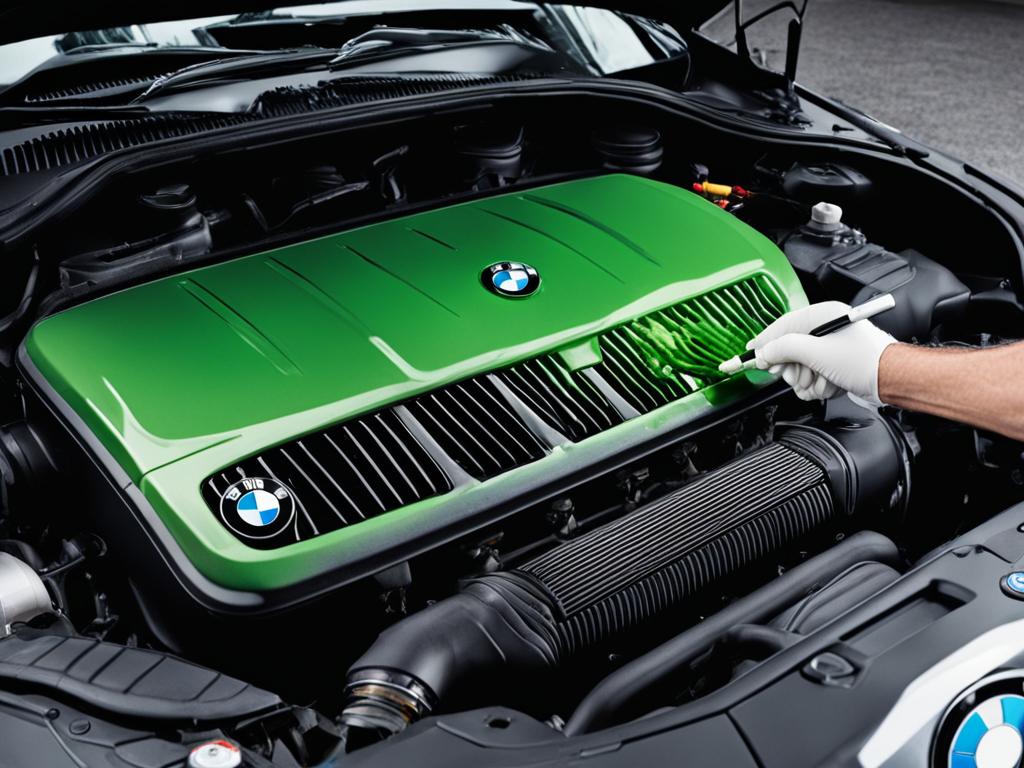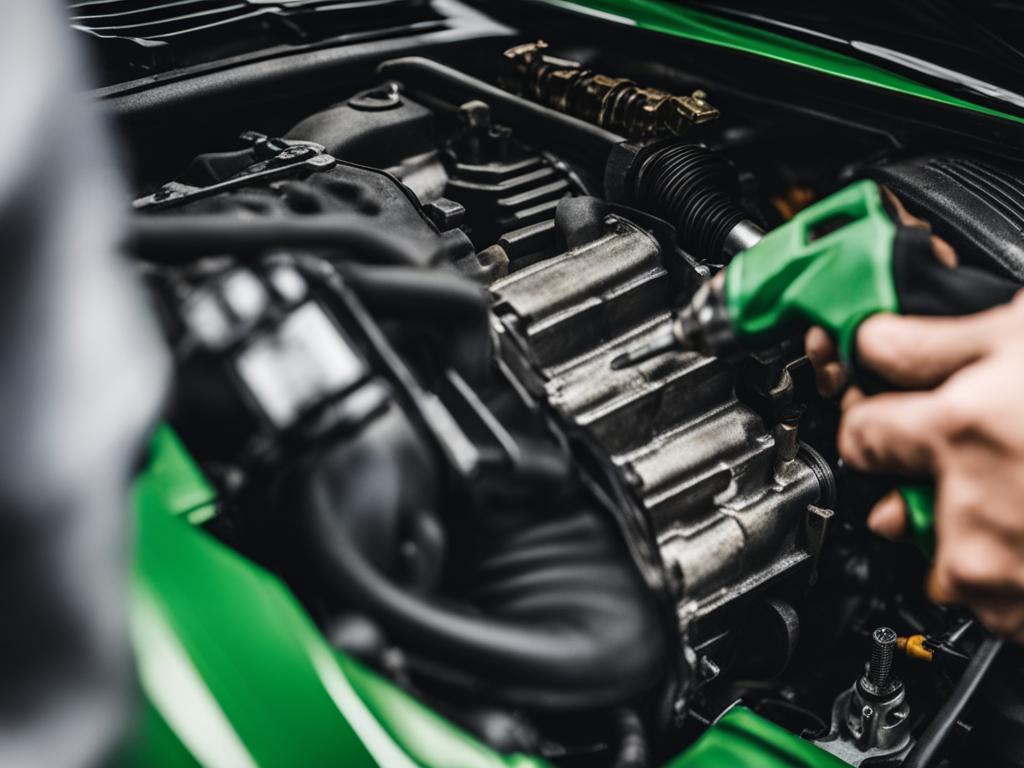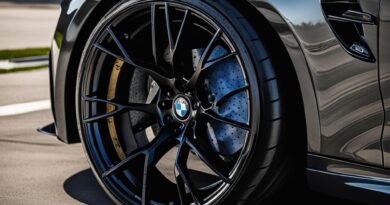BMW Coolant Leak: Diagnose and Fix It Fast
Coolant leaks in BMW vehicles can be a common issue, causing potential damage to the engine if left unaddressed. Identifying the problem and taking appropriate action is crucial to prevent further damage. In this article, we will explore the common causes, symptoms, and solutions for BMW coolant leaks.
Key Takeaways:
- Coolant leaks can be a common problem in BMW vehicles.
- Identifying the specific cause of the coolant leak is crucial for effective repair.
- Symptoms of a BMW coolant leak include coolant spots, a sweet aroma, coolant level decrease, engine overheating, and warning lights.
- Diagnosing a coolant leak may require a thorough inspection and pressure test.
- Appropriate solutions may involve radiator, water pump, coolant reservoir cap, thermostat housing, or radiator hose repairs or replacements.
Common Causes of BMW Coolant Leaks
There are several common causes of coolant leaks in BMW vehicles. Identifying these causes is essential in determining the appropriate repair or replacement. Let’s take a closer look at the most frequent culprits:
- Radiator failure: A damaged or worn-out radiator can result in coolant leaks. Over time, the radiator may develop cracks or corrosion, causing the coolant to leak.
- Faulty coolant reservoir cap: The cap on the coolant reservoir plays a crucial role in maintaining the right pressure. If it becomes worn or damaged, it can lead to coolant leaks.
- Failing water pump: The water pump is responsible for circulating the coolant through the engine. If the water pump gets damaged or worn, it can cause coolant leaks.
- Warped thermostat housing: A warped thermostat housing can disrupt the proper functioning of the thermostat, leading to coolant leaks. Over time, heat cycles can cause the housing to warp.
- Degraded radiator hoses: The radiator hoses can deteriorate over time due to heat and exposure to coolant. Cracks, leaks, or loose connections in the hoses can lead to coolant leaks.
- Road debris and minor collisions: Occasionally, road debris or minor collisions can cause damage to the radiator or other components, resulting in coolant leaks.
By understanding these common causes, BMW owners can be better equipped to address coolant leaks promptly and effectively.
Quote:
“Identifying the specific cause of a coolant leak is crucial in determining the appropriate repair or replacement.” – BMW Expert
Symptoms of a BMW Coolant Leak
It is important to be able to recognize the symptoms of a coolant leak in your BMW. Promptly identifying these symptoms can help prevent further damage to your engine. Here are some common signs to look out for:
- Coolant spots on the ground: If you notice puddles of coolant beneath your parked BMW, it is a clear indication of a coolant leak.
- Sweet aroma from the engine compartment: A distinct sweet smell coming from under the hood can be a sign of coolant leakage.
- Decreased coolant level: If you find yourself frequently having to top up your coolant reservoir, it may indicate a leak in the system.
- Engine overheating: Coolant leaks can lead to insufficient cooling, causing your engine to overheat. Pay attention to any sudden increases in engine temperature.
- Dashboard warning lights: Leaks can trigger warning lights on your dashboard, such as the coolant temperature warning light. If this light illuminates, it is essential to address the issue promptly.
If you notice any of these symptoms, it is crucial to have your vehicle inspected and repaired by a qualified technician. Ignoring a coolant leak can result in severe engine damage and expensive repairs.

| Symptoms | Description |
|---|---|
| Coolant spots on the ground | Puddles of coolant visible beneath the parked vehicle |
| Sweet aroma from the engine compartment | A distinct sweet smell coming from under the hood |
| Decreased coolant level | Frequent need to top up the coolant reservoir |
| Engine overheating | Sudden increases in engine temperature |
| Dashboard warning lights | Warning lights related to coolant system issues |
Diagnosing BMW Coolant Leaks
Diagnosing a coolant leak in your BMW can be a challenging task, as the source of the leak may not always be visible. However, a thorough inspection of key components can help identify signs of leakage or damage.
Start by examining the radiator, coolant reservoir, water pump, thermostat housing, and radiator hoses. Look for any visual indications of coolant leakage, such as wet spots or stains. Pay attention to any unusual odors or steam coming from the engine compartment, as these may also indicate a coolant leak.
Additionally, a pressure test can be performed to determine the exact location of the leak. This involves applying pressure to the cooling system to mimic operating conditions and identifying any areas where pressure drops occur. This test is best carried out by a professional mechanic who specializes in BMW vehicles, as they have the expertise and necessary equipment to perform it accurately.
It is important to note that coolant leaks can occur internally, such as in the head gasket or engine block, which may not be visible to the naked eye. If all visual inspections and pressure tests fail to identify the source of the leak, further diagnostic procedures may be required, such as a combustion gas test or dye injection test.
“Diagnosing a coolant leak in your BMW requires a systematic approach, inspecting critical components and utilizing specialized tests if necessary. Seeking the expertise of a professional mechanic ensures accurate diagnosis and avoids unnecessary repairs.”
Once the source of the coolant leak has been identified, appropriate repairs can be undertaken. It is crucial to address the issue promptly and have the repairs performed by a qualified technician using high-quality replacement parts.
Solutions for BMW Coolant Leaks
Once a coolant leak in your BMW has been diagnosed, appropriate solutions can be implemented. Depending on the cause of the leak, repairs may involve:
- Radiator replacement: If the radiator is damaged or corroded, it may need to be replaced to prevent further coolant leakage.
- Coolant reservoir cap replacement: A faulty cap can cause coolant to leak. Replacing it with a new one can help resolve the issue.
- Water pump replacement: A failing water pump can lead to coolant leaks. Replacing it with a new pump can restore proper coolant circulation.
- Thermostat housing repair or replacement: If the housing is warped or cracked, it can cause coolant leaks. It may need to be repaired or replaced.
- Radiator hose replacement: Degraded or damaged radiator hoses can result in coolant leaks. Replacing them with new hoses is a common solution.
It is crucial to ensure that all necessary repairs are performed by a qualified technician using high-quality parts. This helps to prevent future coolant leaks and ensures the longevity of your BMW’s cooling system.

Conclusion
Preventing coolant leaks in your BMW is crucial for ensuring the long-term performance and durability of your vehicle. By implementing regular maintenance practices and promptly addressing any signs of leakage, you can effectively prevent coolant leaks from occurring.
One of the key preventive measures is to replace radiator hoses according to the manufacturer’s recommended intervals. Over time, these hoses can deteriorate, leading to potential leaks. By proactively replacing them, you can minimize the risk of coolant leaks.
Additionally, it is essential to follow the manufacturer’s guidelines for coolant usage. Using the recommended coolant blend and maintaining the appropriate coolant level can help prevent issues within the cooling system that could cause leaks.
Scheduling routine inspections of the cooling system is also important for identifying potential issues before they escalate. By having a professional mechanic regularly examine your BMW’s cooling system, any signs of wear or damage can be addressed promptly, preventing coolant leaks and potential engine damage.
FAQ
What are the common causes of BMW coolant leaks?
Common causes of coolant leaks in BMW vehicles include radiator failure, a faulty coolant reservoir cap, a failing water pump, a warped thermostat housing, degraded radiator hoses, and road debris or minor collisions.
What are the symptoms of a BMW coolant leak?
Symptoms of a BMW coolant leak can include coolant spots on the ground where the car is parked, a sweet aroma coming from the engine compartment, a decrease in the coolant level, engine overheating, and the appearance of warning lights on the dashboard.
How can I diagnose a coolant leak in my BMW?
Diagnosing a coolant leak in a BMW can be challenging as the source of the leak may not always be visible. It is important to conduct a thorough inspection of the radiator, coolant reservoir, water pump, thermostat housing, and radiator hoses. A pressure test may also be performed to pinpoint the exact location of the leak.
What are the solutions for BMW coolant leaks?
Solutions for BMW coolant leaks depend on the cause of the leak. Repairs may involve radiator replacement, coolant reservoir cap replacement, water pump replacement, thermostat housing repair or replacement, or radiator hose replacement. It is important to have the repairs performed by a qualified technician using high-quality parts.
How can I prevent coolant leaks in my BMW?
Preventing coolant leaks in a BMW involves regular maintenance such as replacing radiator hoses at recommended intervals and promptly addressing any signs of leakage. It is also important to follow the manufacturer’s guidelines for coolant usage and schedule routine inspections of the cooling system.




